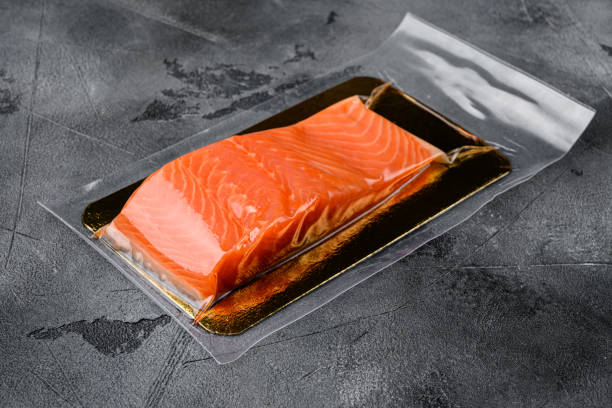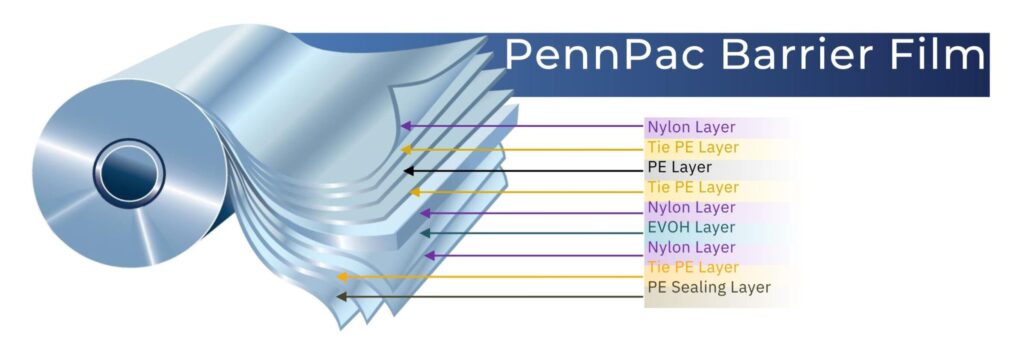
The Importance of Barrier Properties
Consumers focus much attention to price, brand name, and general appearance of a product. Unknowingly, overlooking barrier properties packaging films exhibit behind the scenes. In addition to food packaging providing an attractive and informative shelf presentation, there’s more! Moisture, oxygen, oil, gas and light are controlled. All of which, are essential for maintaining freshness.
Steaks, fish, hot dogs, sausages, nuts, and poultry appear fresh and vibrant through their heat-sealed and crystal-clear packaging films. A perishable product’s additives or natural formulation may be negatively impacted by many of the aforementioned properties. As such, subject to flavor, appearance, and odor concerns with inadequate packaging.
How to Choose?
What film(s) get used for which product type is determined by what “needs to stay out” and what “needs to stay in.”
What Foods Require Protection?
Food categories requiring barrier protection include, but are not limited to: bakery, confectionary, pet foods, chips/snacks, nuts, cheeses, meats, poultry and even dehydrated foods. For instance, a cracker or chip requires resistance to light and moisture to maintain crispness. Inversely, a dehydrated product like jerky, is packaged to retain a specific level of moisture. All of which, allow for longer shelf-life periods.
Similarly, fresh bakery products use a perforated film designed to release moisture at a specific rate to remain crispy on the outside. Meanwhile, remaining soft and dense on the inside.
Types of Barrier Film Substrates Used in Specialty Films – Thermoforming Film
Let’s touch on the basic types of barrier film substrates used for packaging many of our favorite products, to maintain shelf-life quality. Polyester (PET), Metallized Polypropylene (MPP), Ethylene Vinyl Alcohol (EVOH), Polypropylene (PP), Polyethylene (PE), and Nylon (PA). Nonetheless, being the most common barrier materials creating laminate structures used in most food packaging applications.
While each material has its own list of characteristics, they are often strategically combined in lamination structures by Packaging Engineers and Food Scientists.
What brings these materials together is determined by what barrier is required for a specific product.
Here’s an Example
EVOH, PA and PE/PP are typically organized with two skin layers and a core. The EVOH is usually the core because of its exceptional oxygen barrier properties. Nylon may be added as a tie layer for its strength and durability. When combining two or more films to make a laminated structure, you are essentially combining the barrier properties of all the materials.

Choosing the Right Packaging Thermoforming Film Supplier for Your Needs
In today’s demanding and competitive perishable food supply chain, brand owners drive reductions in food product waste. Therefore, maintaining a sensitivity to environmental conservation initiatives. Above all, improving our daily food consumption.
Additionally, scientists and engineers working closely with regulatory bodies like the USDA/FDA. Such to ensure that perishable foods are properly packaged to provide your family safe, healthy and balanced food options.
High-Barrier Thermoforming films deliver the ultimate performance for food and beverage products – they provide excellent packaging shelf life while also preserving the taste and quality of the product.
PennPac’s High-Barrier food films are multilayer thermoforming structures that include EVOH (ethylene-vinyl alcohol). EVOH is a flexible, crystal clear, glossy thermoplastic copolymer that’s known for having some of the best barrier resistance to gases such as oxygen, nitrogen, and carbon dioxide. This makes it ideal for packaging protein products.

In addition to their protective qualities, PennPac’s high-barrier packaging films offer excellent clarity which allows consumers to see the product inside easily. To enhance shelf appearance, PennPac offers pigmented Thermoforming options as well.
Contact PennPac to discuss your food packaging barrier requirements, or to request a sample. We can help evaluate which materials are best suited for your application.
We look forward to working with you!
